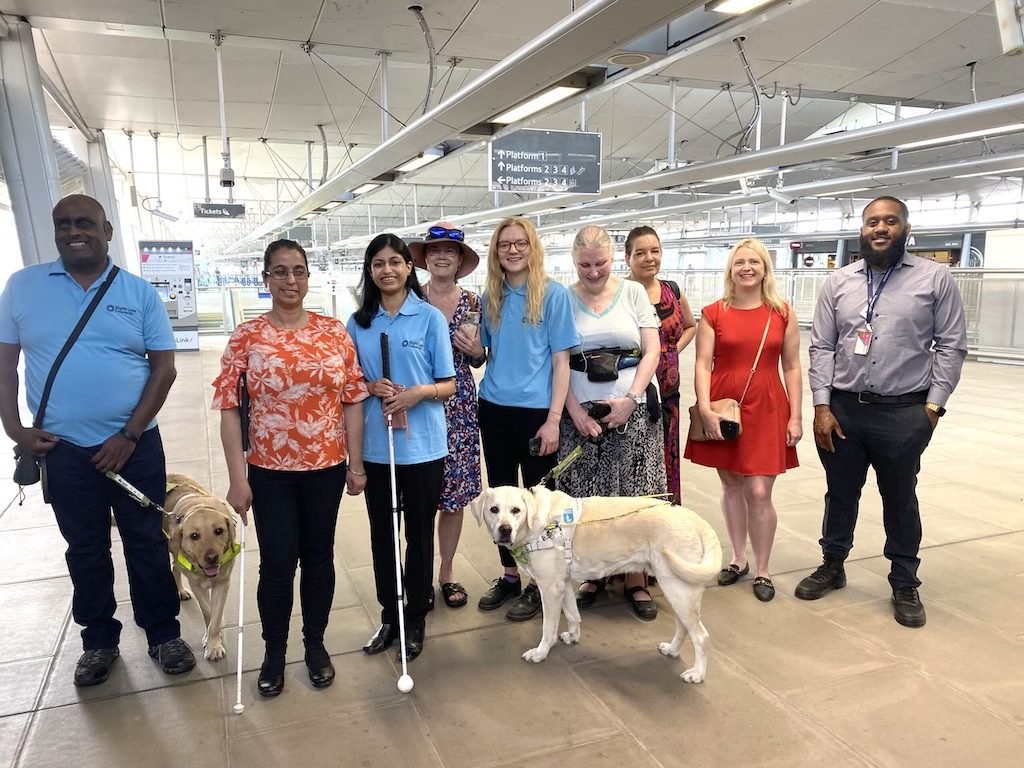Pioneering technology bridges blind transport divide
Researchers at the University of Birmingham are helping pioneer advances in technology that could transform how blind and visually impaired passengers navigate transport hubs.
Working with smart spaces tech company BriteYellow and funded by West Midlands 5G (WM5G), the project takes a three-stage approach of turning 2D plans into a digital augmented reality models which can guide visually impaired passengers around railway stations.
In the first stage, data preparation transforms existing 2D floor plans into usable data, annotating these plans to indicate crucial elements, such as areas for vertical transportation (stairs, elevators), navigable passageways, and potential obstacles. This stage establishes a precise and comprehensive visual representation of the station’s layout.
Once the data is adequately prepared, the focus shifts to the second stage, termed the bootstrap engine, in which the annotated floor plans are imported and translated into navigable meshes and graph-based data structures. This conversion effectively turns the physical station into a digitally navigable environment.
The final stage, termed intrastation routing, employs Dijkstra's algorithm (used for finding the shortest distance between nodes) to determine the most efficient route and generates a coordinate path. This path formation can then be used for Augmented Reality purposes, such as guiding a passenger through the station to their platform.
Dr Joe Preece, Research Fellow in Railway Data Analysis at the Birmingham Centre for Rail Research and Education says, “The simplicity and scalability of the pathfinding system are one of its greatest strengths. Since the application only requires 2D floorplans, incorporating new stations into the software is a straightforward process. Existing floor plans can be easily adapted and annotated, creating data sets for any station with minimal effort and resource use. Consequently, the wayfinding system can be continuously expanded and updated, keeping pace with evolving transport layouts, and ensuring the broadest coverage possible for passengers.
“For visually impaired passengers, we can take this a step further. More than just presenting visual data, the application could integrate auditory aids such as verbal directions, hazard warnings, and tool-based instructions. This auditory feature would not only voice descriptions of station layouts, but also emits warnings on any impending obstacles. Moreover, it would serve as an interface to reach out to station staff, fostering a seamless communication channel for immediate assistance.”
This project, adds Dr Preece, merely scratches the surface of the possibilities. “As technology continues to evolve, so does our capacity to improve transport access for those with disabilities, bringing us one step closer that truly understands and serves all its inhabitants.
“After all, transport’s purpose isn’t merely to carry one to a destination, but to ensure that everyone gets there with ease, safety, and dignity. Technology may just be the compass guiding us towards this inclusive future.”

